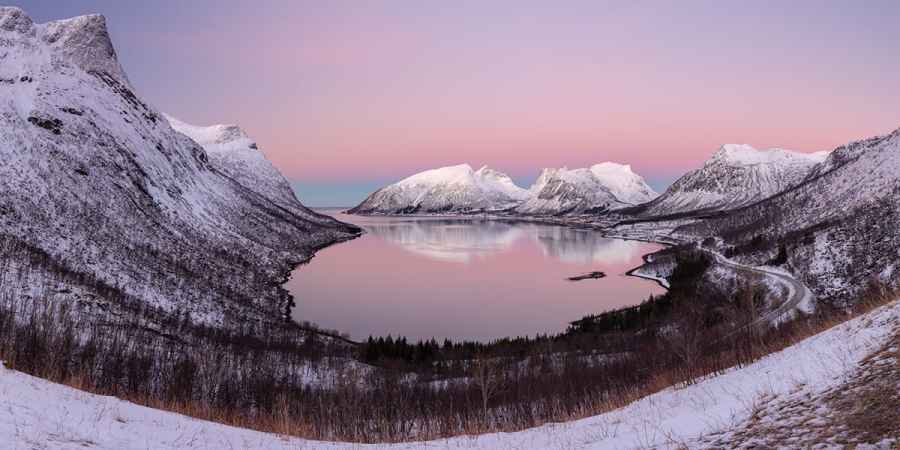
Steinfjord, Norway, by Andy Farrer
Canon EOS 5Ds, 16-35mm, 2.5secs at f/11, ISO 100
The life of a landscape photographer can be a very solitary one. Often it’s a case of chasing the light in remote locations early in the morning or patiently waiting for the setting sun to fall behind a landmark. But one UK-based group – called the Landscape Collective UK (LCUK) – was formed a few years ago to give landscape photography fanatics opportunities to meet and discuss their images.
Currently comprising 14 members, the group was initiated by photographer and author Tony Worobiec, who explains: ‘The reason why we got together to form this group is because many of us photographers kind of work in isolation. You’re producing work and you’re thinking, “Who’s going to get to see this work?” I produce a number of books, but this is not quite the same because you’re not getting that human contact. The idea was to try to group together people with similar enthusiasms and ability.’
The group meets approximately every two months at a venue in the coastal town of Lyme Regis, situated in the picturesque English county of Dorset.
‘One of the reasons why we decided to meet here is because for those people travelling long distances – some people travel from as far as Buckinghamshire and London to get here for a Sunday morning – it’s a fabulous location to photograph afterwards,’ says Tony. ‘In other words the day is a complete one, with it sometimes involving taking photographs with your fellow [collective] colleagues as well.’
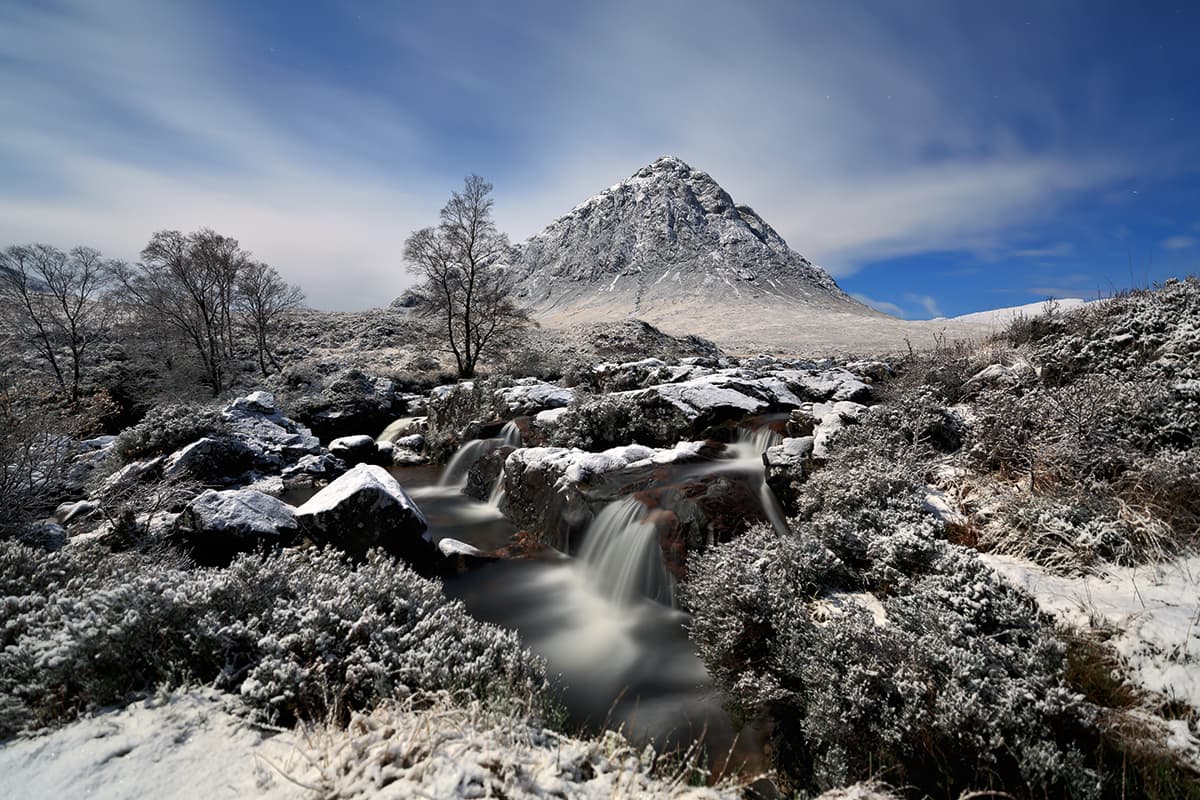
Etive Mor by Peter Spencer
Canon EOS 5D Mark III, 15mm, 52secs at f/3.2, ISO 400
Choosing members
The members vary from full-time professionals, such as Dorset-based landscape photographer Andy Farrer, to very keen amateurs who hold down regular daytime jobs – and the membership includes a bricklayer, graphic designer and civil servant.
‘I knew Susan Brown, Paul Mitchell and obviously my wife, Eva… they are the only ones I actually knew,’ says Tony. ‘Paul Mitchell knew two other people I’d never met before through Flickr, or some other photographic social media, so we brought those people in and it kind of “networked” from there. Most of us were strangers to each other when we actually got together. Incidentally, Andy Farrer only lives about 10 miles away, but I’d never really met him before. Somebody suggested we try Andy; I actually had taught him art – he’s now in his 40s – but there he was, working in his little bubble 10 miles away and I was working here in my bubble.’
Andy – winner of the UK Landscape Photographer of the Year in 2015 – reveals: ‘I thought it was a really good idea just to meet with peers. Social media and photo-sharing sites are really just everybody slapping you on the back and telling you how brilliant everything is – it’s all very nice but it doesn’t really help you progress. What we wanted was somewhere we could actually be brutally honest and discuss ideas in a non-competitive, formal setting.’
He adds: ‘We needed a certain number of people to get enough momentum and to keep costs down for renting the room and things like that, but obviously not too many because we all take prints along to show each other and have a chat. We’ve all got quite different approaches. Susan, Eva and Tony are very accomplished with lots of books and exhibitions. Susan’s quite high up with the Royal Photographic Society (RPS); she’s on the judging panels. We’ve all got quite different approaches.’

Corfe Castle Summer Mist by Andy Farrer
Canon EOS 5D Mark II, 21mm, 1/40sec at f/11, ISO 100
Reviewing recent work
The Landscape Collective’s regular meetings see two tables set up for members to lay out their most recent landscape work for viewing and input from the others in the group. ‘Usually we bring about six or seven images,’ Tony says, ‘and what we don’t do is sit around a screen and somebody formally puts their work up. We quite deliberately have two long tables and somebody will put a selection of their work in, and another photographer on the other side of the room will do the same. We kind of visit the two tables and each of us informally will just talk to the person. In this way, you tend to get a conversation started, such as, “When did you take this?” and, “What were you thinking?”
‘I have heard people making critical comments, but in a very gentle, supportive manner. Nobody ever feels demolished as a consequence, and I think everybody goes away feeling it was a great day. It’s become a very honest forum for people to bring work along on a fairly regular basis. I think every member of the Landscape Collective is sufficiently confident that they know that the comments they get from their peers will be honest and constructive.’
As for the beneficial aspects of meeting up, Andy says: ‘Normally everybody looks at everything. Some you find really exciting and ask lots of questions about, and others perhaps less so. But it’s great to see what people have been doing in those couple of months. It makes you a bit more inclined to get up and get out and get some new images. Certainly if you’re having a “flat spot” you go away feeling quite enthusiastic and it helps to “buzz” things along a bit I think.’

Dewdrops by Paul Mitchell
Nikon D7000, 1/100sec at ISO 100
Advice and equipment
Most of the group now shoot digitally and they talk about camera gear from time to time. Andy reveals: ‘Some of us are Canon users, some of us use Nikon. I’m quite keen on gear, but I’m not a “gear junkie”; it is useful to ask questions about gear. I’ve got the new version of the Canon 100-400mm lens and it is significantly better, so you can say, “You know what, guys? It’s worth the money.” It’s nice to be able to have that interaction, rather than just reading a review, and ask each other and get unbiased advice. For things like framing, and getting picture mounts cut, it’s just nice to get contacts from other people that might save us some money and make us a bit more competitive.
It’s interesting to see the way we present our prints because unless you go to galleries and lots of exhibitions, you don’t necessarily see other people’s end results.’
Tony adds: ‘One guy, Roger Langden, still shoots on medium or even large-format film. Another one of our members, Paul Mitchell, does a lot of work on pinhole cameras but, of course, the images are then digitally scanned and he produces digital images as a consequence. But he continues to use film, and having this mix in the group helps.
I started to write books about 20 years ago and, to be honest, I was very loath to give up film. Eventually I thought, “Digital has something to offer. We ought to take this seriously?”’
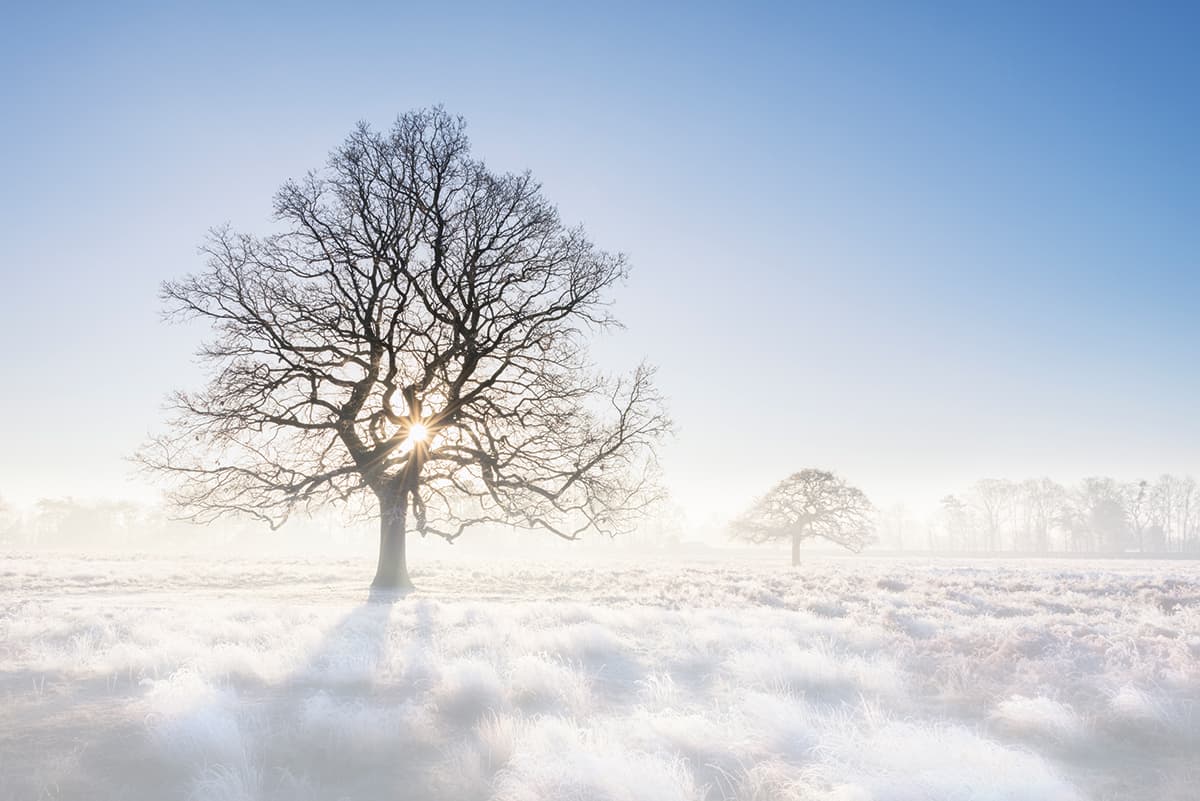
Our Tree on a Winter Morning by Vanda Ralevska
Nikon D800, 24-70mm, 1/40sec at f/22, ISO 100, tripod
The main benefits
As for the major benefits of being a member of the group, Andy notes: ‘Other people go to different places that I’ve never been to, so you can get ideas for different locations. I find it very interesting seeing people’s approaches to their photography. I think if you just glean one little thing from one person at a meeting that’s progress. Something that puts an idea in your mind or makes you look at something in a slightly different way… all these things are beneficial.’
He adds: ‘I’ve only ever really printed images when people have ordered things, but now I do print things, pop them in a box and take them along to meetings, which is good because once you see things printed you adjust your processes because you’re thinking more of the output. I think probably the biggest thing I’ve got from the last couple of years is that I’m thinking about the flat print at the point of capture now, whereas previously I was probably thinking along the lines of composition and not really thinking quite as creatively perhaps.’
Tony admits: ‘It’s really quite difficult to disassociate yourself from your own work – you look at it and think, “How can I be objective?” So it’s just brilliant to bring along something that you think you’re enthusiastic, or even wary, about and actually show it to others and receive intelligent feedback. It’s also useful because a lot of these people have knowledge of good locations or even new developments in camera design, which we talk about informally and I sometimes think, “Crikey! I’d better reset my camera when I get home”. It’s things like this that actually prove beneficial.’
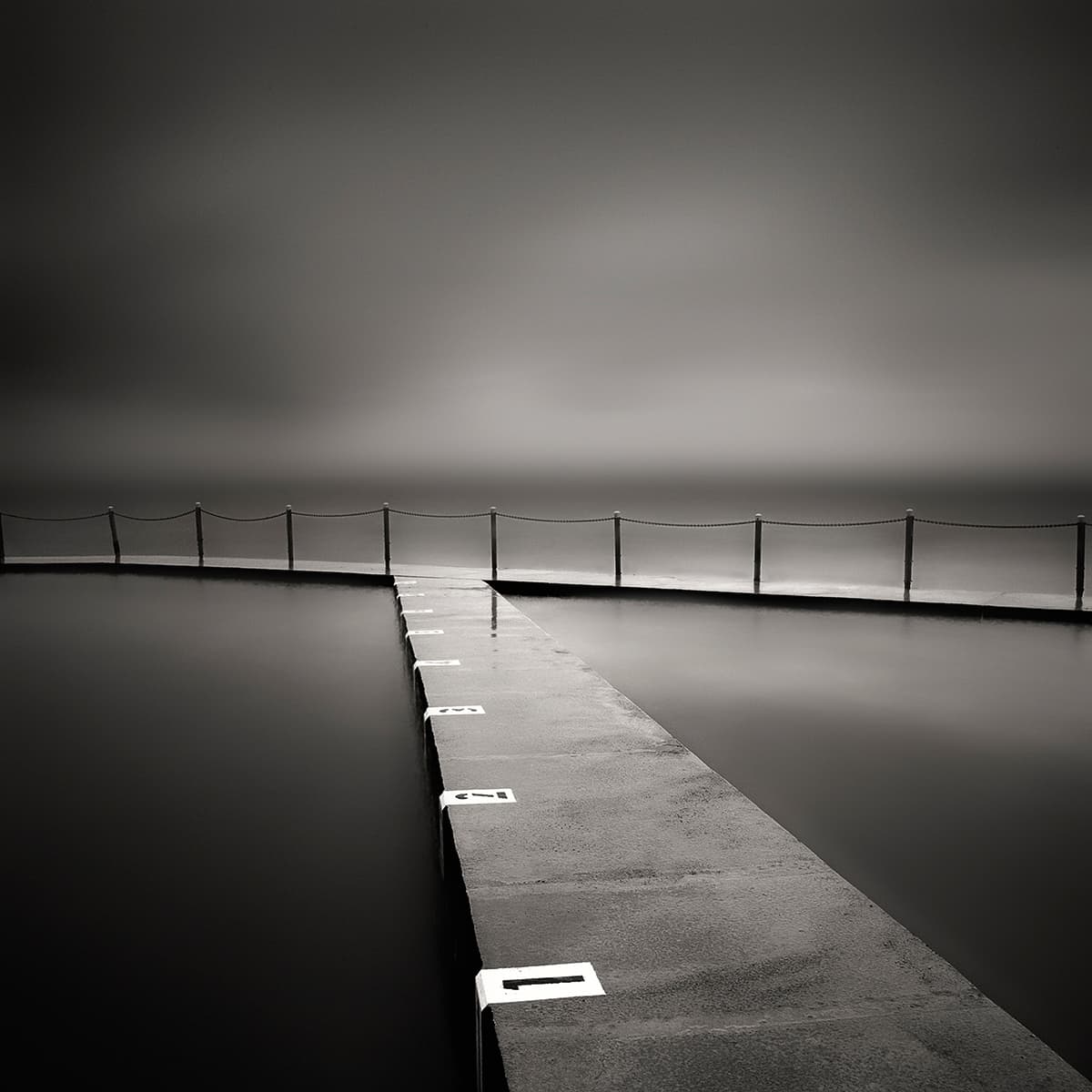
Lane Swimming by Sue Brown
Canon EOS 5D, 24-105mm, 80secs at f/20, ISO 100
How to set up a group
So what advice would Andy and Tony give to others thinking of setting up a similar photography group? Andy reveals: ‘It was quite an organic thing really and I think anyone can do it with social media; it’s just working it into an offline group rather than an online group. It’s easy enough to get a group of people together, meet up in a central place and find a room. It’s quite a straightforward thing to do, but I guess you need one organised person who can front it.’
Tony adds: ‘I would say it all depends on whether you get satisfaction from a camera-club situation, which, personally, I find rather static. I think the key here is who you pick. It’s got to be people who are non-competitive; people who are probably of the same standard and it’s also important to bring along younger photographers. I think our demographic is quite a good one – we’ve got some people who are in their 30s and 40s. Also, it’s got to be people who are good listeners. I think the personality as well as their ability to take photographs is important. We’ve handpicked people quite carefully and I think I can say we are almost friends really, even though we didn’t know each other before.’
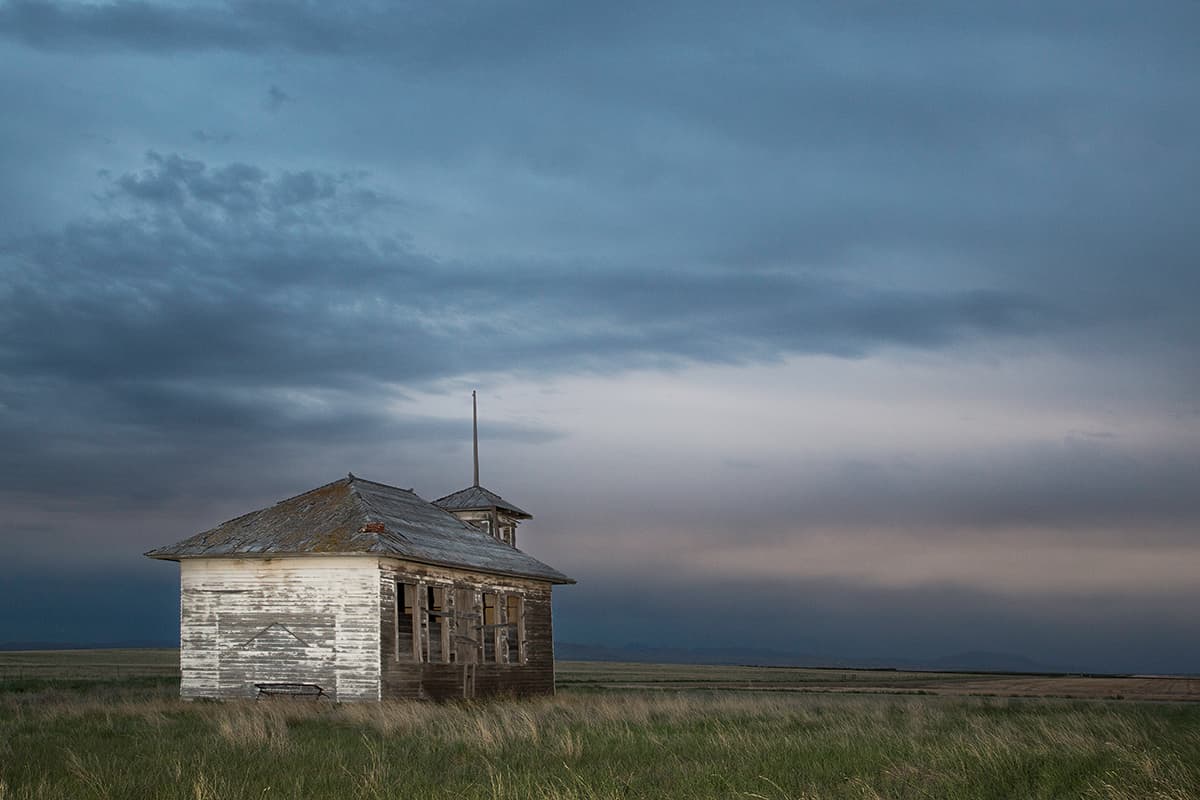
School at Burnham by Tony Worobiec
Canon EOS 5D Mark III, 24-105mm, 1/50sec at f/11, ISO 800
Interview with group member Paul Mitchell
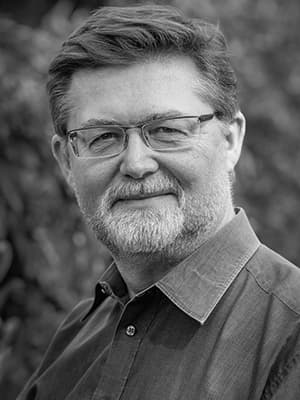
What are the main benefits of being in the group?
‘Landscape photography can be a singularly lonely pastime. Many times I have travelled to a location and returned without seeing a soul. Occasionally, one might bump into a fellow photographer, but more often than not there is a brief nod of the head before going our separate ways again. It is therefore refreshing to belong to a group of like-minded individuals that shares a passion for landscape photography and, where we can, be able to show and discuss our work. I do belong to other groups, but LCUK has a wonderful mix of people and styles.’
Have your landscape skills improved as a result of being a member of the group?
‘I would like to say that my landscape skills improve on an annual basis, but having belonged to LCUK for the past three years it has certainly accelerated that process. It’s the willingness of the group to share locations, processing and printing techniques that I have gained the most from.’
What’s the best piece of advice you’ve been given within the group?
‘I can’t recall a single piece of advice that has made a difference, as it has always been a collective process – hence the name!’
Interview with group member Nicki Gwynn-Jones
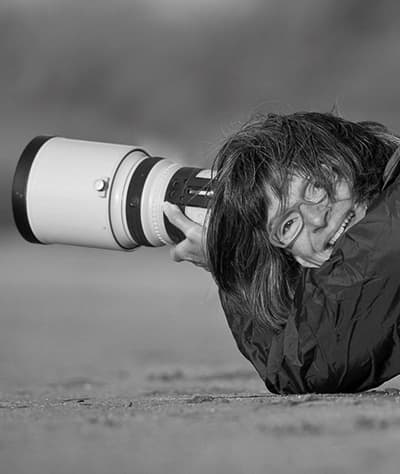
What are the benefits of being in the group?
‘For me, the benefit of being in a group such as LCUK is that I get to spend time with highly talented, creative photographers who cover a variety of styles and perspectives. Because this is such a supportive environment, I feel free to show my most creative work, knowing that I will always get an honest and truthful assessment, but done with sensitivity and a non-judgemental spirit.’
Have your landscape skills improved as a result of being a member of the group?
‘I do think that my work has developed over the time that I have been a member. I have to strive to stay at the top of my game in order to keep up with the incredibly high standards within the group, and I feel that I have become a more discerning photographer. I also enjoy seeing how other people present their work as this always brings fresh ideas.’
What’s the best piece of advice you’ve been given within the group?
‘The encouragement and support that I receive have given me the confidence to stay true to myself and to my view of the world.’

